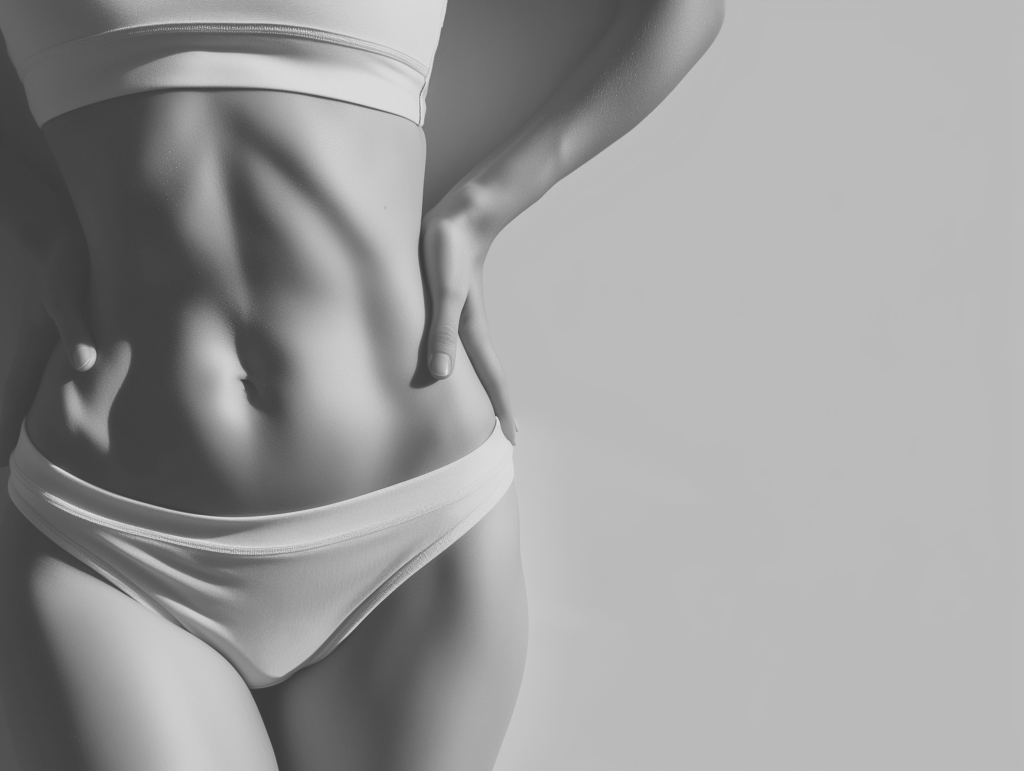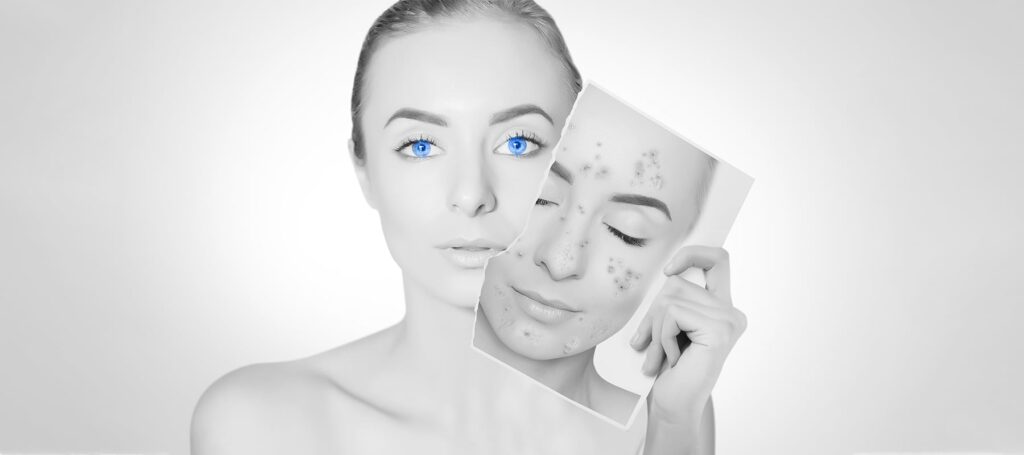Laser Resurfacing…
Overview Of Laser Resurfacing
Laser resurfacing is a skin resurfacing procedure that uses a laser to improve the appearance of your skin or treat minor facial flaws by removing layers of skin.
Laser resurfacing can be done with:
- Ablative lasers. This is a wounding laser, which removes thin layers of skin. Types of ablative treatments include the carbon dioxide (CO2) laser and the erbium laser. At Delle Chiaie Cosmetic Medicine in Hampton NH Tara uses the CO2 Laser from Syneron Candela.
- Nonablative lasers. This is a nonwounding laser, which stimulates collagen growth and tightens underlying skin. This includes many types of lasers as well as intense pulsed light (Ipl) devices.
Another type of laser resurfacing, fractional photothermolysis (Fraxel), is available in ablative and nonablative forms. Delle Chiaie Cosmetic Medicine utilizes the Sublative Radiofrequency which delivers Fractional Bipolar Radiofrequency.
Although nonablative laser resurfacing is less invasive and requires less recovery time, it’s less effective than is ablative laser resurfacing such as Syneron Candela’s power house for full ablation.
Laser resurfacing can decrease the appearance of facial fine lines. It can can also treat loss of skin tone and improve your complexion if you have scars or sun damage. Laser resurfacing does have limitations, however and understanding the specific techniques, risks and possible results can help you decide if laser resurfacing is right for you.
Why It’s Done
Laser resurfacing can be used to treat:
- Wrinkles
- Age spots
- Uneven skin tone or texture
- Sun-damaged skin
- Scar
Risks
Ablative laser resurfacing can cause various side effects, including:
Redness, swelling and itching. After ablative laser resurfacing, treated skin will be itchy, swollen and red. Redness — the degree of which is related to the depth of resurfacing done — can be intense and might last for several months. The aggravation of a previously existing skin condition, such as rosacea, can contribute to redness.
Acne. Applying thick creams and bandages to your face after treatment can worsen acne or cause you to temporarily develop tiny white bumps (milia) on treated skin.
Infection. Ablative laser resurfacing can lead to a bacterial, viral or fungal infection. The most common infection is a flare-up of the herpes virus — the virus that causes cold sores. In most cases, the herpes virus is already present but dormant in the skin.
Changes in skin color. Ablative laser resurfacing can cause treated skin to become darker than normal (hyperpigmentation) or lighter than normal (hypopigmentation). Hyperpigmentation is more common in people who have darker skin. Topical retinoic acid or glycolic acid can help treat hyperpigmentation after the treated area has healed. Use of sunscreen during the healing process also is important. Nonablative fractional photothermolysis might help improve hypopigmentation.
Scarring. Ablative laser resurfacing poses a slight risk of scarring.
Turning of the eyelid (ectropion). Rarely, ablative laser resurfacing near the lower eyelid can cause the eyelid to turn out and expose the inner surface. Surgery is needed to correct the problem.
Nonablative laser resurfacing also can cause side effects, including:
Infection. Nonablative laser resurfacing can cause a flare-up of the herpes virus.
Changes in skin color. If you have tanned or darker skin, nonablative laser resurfacing can cause your skin to become temporarily darker (hyperpigmentation).
Mild swelling and redness. Swelling and redness typically last only hours or days.
Blistering and scarring. Rarely, nonablative laser resurfacing can cause blistering and scarring.
Laser resurfacing isn’t for everyone. Your doctor might caution against laser resurfacing if you:
- Have active acne
- Have taken the acne medication isotretinoin (Amnesteem, Claravis) during the previous year
- Have an autoimmune disease or a weak immune system
- Have a tendency to form scars
- Have very dark skin
- Have unrealistic expectations
How You Prepare
Before you have laser resurfacing, your doctor will likely:
Review your medical history. Be prepared to answer questions about current and past medical conditions and any medications you’re taking or you’ve taken recently, as well as any cosmetic procedures you’ve had in the past.
Do a physical exam. Your doctor will inspect your skin and the area that will be treated. This will help him or her determine what changes can be made and how your physical features — for example, the tone and thickness of your skin — might affect your results.
Discuss your expectations. Talk with your doctor about your motivations and expectations, as well as the potential risks. Make sure you understand how long it’ll take to heal and what your results might be.
Before laser resurfacing, you might also need to:
Take medication to prevent complications. If you’re having ablative laser resurfacing — or nonablative laser resurfacing and you have a history of herpes infections around your mouth — your doctor will prescribe an antiviral medication before and after treatment to prevent a viral infection. Your doctor might recommend taking an oral antibiotic medication around the time of the procedure to help prevent a bacterial infection. In addition, your doctor might recommend using a topical retinoid on your skin for four weeks before having ablative laser resurfacing.
Avoid unprotected sun exposure. Too much sun up to two months before the procedure can cause permanent irregular pigmentation in treated areas. Discuss sun protection and acceptable sun exposure with your doctor.
Arrange for a ride home. If you’re going to be sedated during laser resurfacing, you’ll need help getting home after the procedure.
What You Can Expect During The Procedure
How laser resurfacing is done
Ablative laser resurfacing is an outpatient procedure. Your doctor will numb your skin with local anesthetics. For extensive resurfacing, such as treatment to your whole face, you might be sedated.
During ablative laser resurfacing, an intense beam of light energy (laser) is directed at your skin. The laser beam destroys the outer layer of skin (epidermis). At the same time, the laser heats the underlying skin (dermis), which causes collagen fibers to shrink. As the wound heals, new skin forms that’s smoother and tighter. Ablative laser resurfacing typically takes between 30 minutes and two hours, depending on the technique used and the size of the area treated.
Nonablative laser resurfacing can be done in your doctor’s office. Your doctor will protect your eyes and numb your skin with a topical anesthetic one hour before treatment. If you’re having fractional photothermolysis, you might need additional pain relief. To protect the outer layer of your skin, your doctor will apply a water-based gel. The laser damages collagen beneath your skin and stimulates the growth of new collagen, tightening underlying skin and improving skin tone and appearance. No skin is removed.
Nonablative laser resurfacing typically takes between 15 minutes and 1 1/2 hours, depending on the technique used and size of the area treated. A series of treatments is typically scheduled over the course of weeks or months.
After The Procedure
After ablative laser resurfacing, the treated skin will be raw, swollen and itchy. Your doctor will apply a thick ointment to the treated skin and might cover the area with an airtight and watertight dressing. To relieve pain, take an over-the-counter pain reliever and apply ice packs. Your doctor will explain how to care for your skin. You might prefer to remain home while you heal. Once new skin completely covers the treated area — usually after one or two weeks depending on the depth of resurfacing and type of laser — you can use cosmetics to conceal any redness.
After nonablative laser resurfacing, your skin might be temporarily red or swollen. Use ice packs as needed. You can apply makeup and resume your normal activities immediately.
Results
After ablative laser resurfacing, your skin might stay red or pink for up to several months. However, once the treatment area begins to heal, you will notice an immediate difference in your skin quality and appearance. The effects can last for years.
Results after nonablative laser resurfacing tend to be gradual and progressive, rather than immediate and dramatic. You’re more likely to notice improvements in skin texture and pigment than in wrinkles.
After laser resurfacing, avoid unprotected sun exposure for one year to prevent irregular pigmentation. Keep in mind that your results might not be permanent, since as you age you’ll continue to acquire lines by squinting and smiling. New sun damage also can reverse your results.
What Next…
Visit Tara Delle Chiaie at Delle Chiaie Cosmetic Medicine in Hampton NH to see if this is right for you.
We are located close to Newburyport MA, Hampton Falls NH, Rye NH, Portsmouth NH and Exeter NH just to name a few surrounding towns.
We can be conveniently found on Route 1 in Hampton NH right off of 101.
You can book on line by clicking on the big orange Mind Body button at the bottom of the page or if you prefer you can call 603-783-1087. We look forward to helping you along your personal journey.


